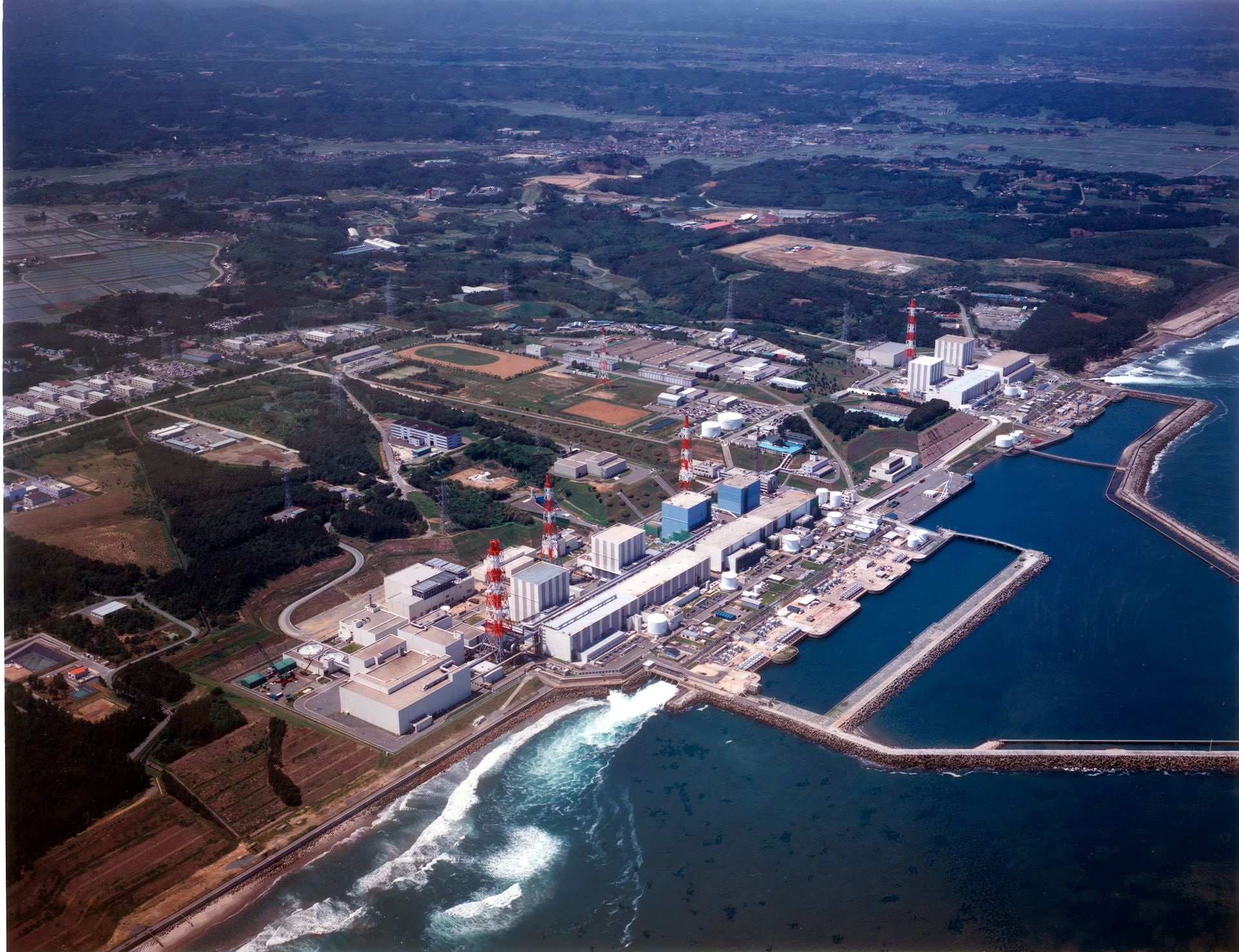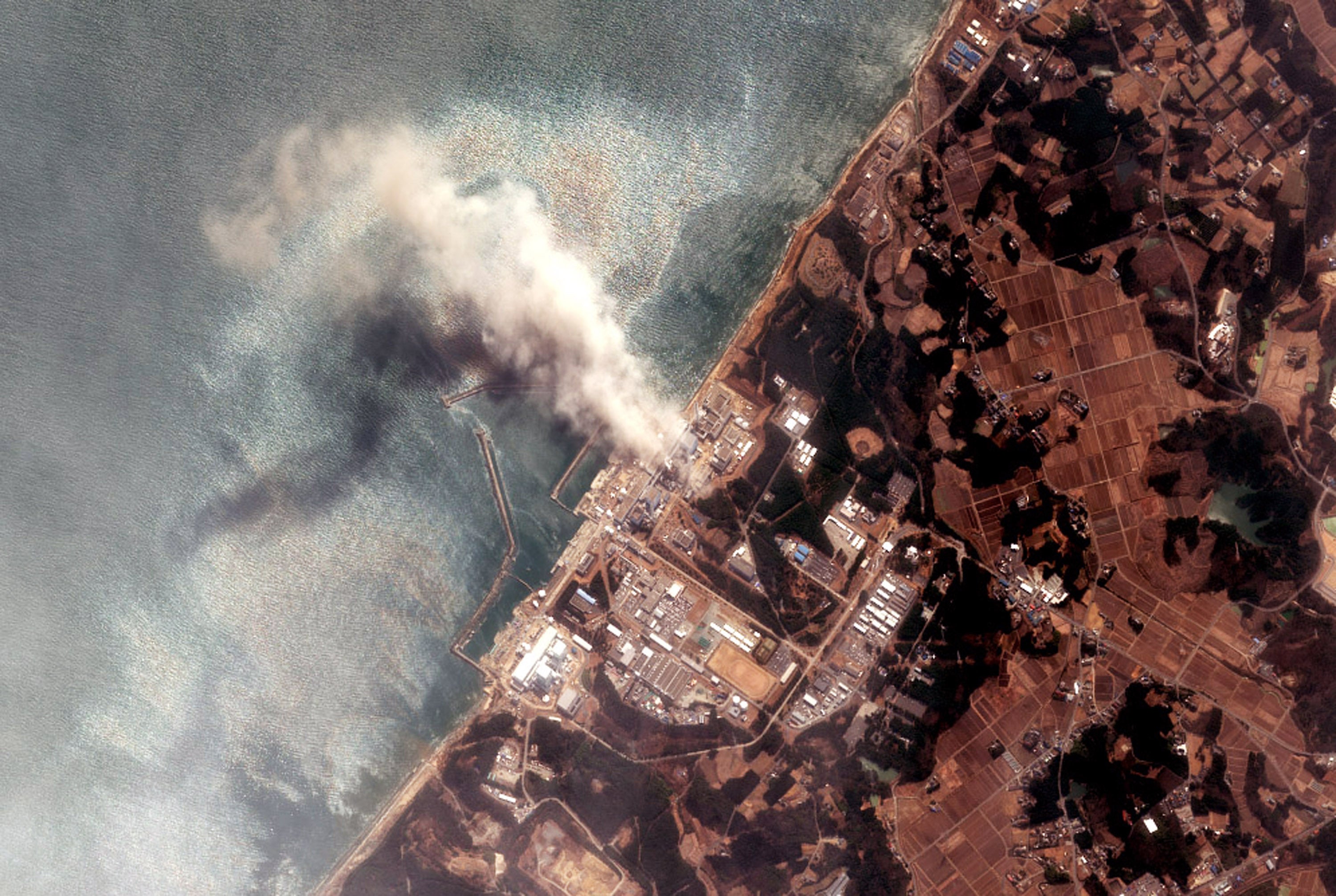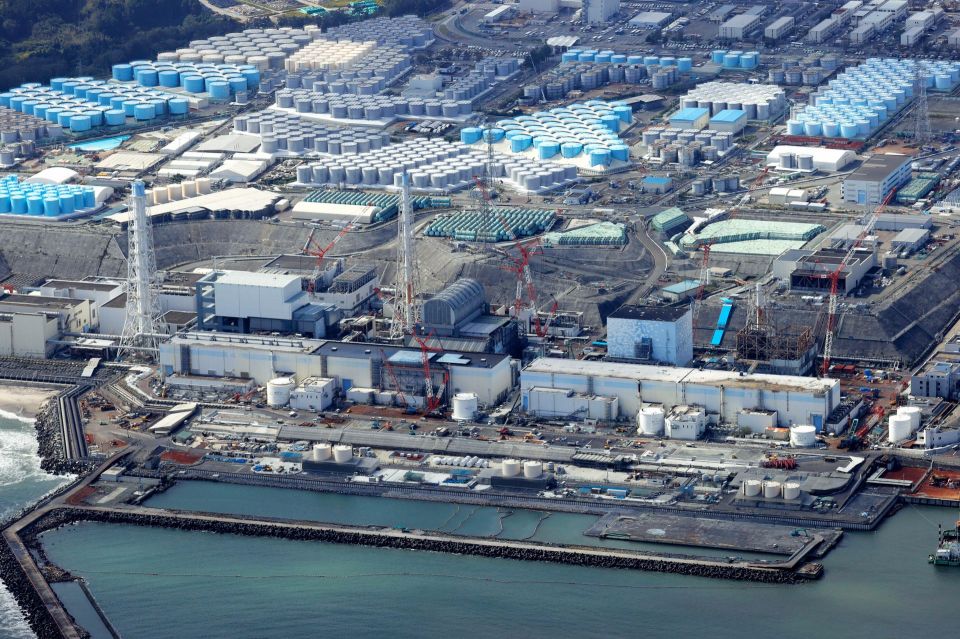Fukushima
The Fukushima Daiichi Nuclear Power Station is located on an 860 acre site near the towns of Okuma and Futaba in the Futaba District of Fukushima Prefecture, Japan. The plant is located 461 miles north of Tokyo along the Pacific Coast. First commissioned in 1971, the Power Plant consisted of six boiling water reactors (BWR) driving electrical generators with a combined power of 4.7 gigawatts, making Fukushima Daiichi one of the 25 largest nuclear power stations in the world.
On March 11, 2011 at 2:46 p.m, Japan experienced one of the most powerful earthquakes in recorded history. The earthquake was a magnitude 9.0. The epicenter was approximately 43 miles off the East coast of Japan in the Pacific Ocean. The earthquake caused widespread damage especially in the Tōhoku region, which consists of the northeastern portion of the island of Honshu. The reactors at Fukushima Daiichi shutdown within seconds, then the backup generators started providing power to the facility.

The earthquake was followed by an estimated 46 foot tsunami triggered by the earthquake. The tsunami traveled at an estimated 100 miles an hour. The tsunami topped the plants 19 foot seawall, flooded the basements, and disabled the emergency diesel generators located there. Even though the reactors were shut down, they still gave off residual heat. This residual heat caused the water to boil away changing the water to steam and exposed the fuel rods which started to over heat. With no backup power, the workers at the plant now had no way to cool them. As the water boiled away in the reactors, and the water level in the fuel rod pools dropped, the now exposed reactor fuel rods began to overheat severely and melt down. In the hours and days that followed, reactors 1, 2, and 3 experienced a nuclear meltdown.
In the high heat and pressure of the reactors, a reaction between the nuclear fuel rod metal cladding and the steam now surrounding them produced explosive hydrogen gas, causing several hydrogen-air chemical explosions. It is estimated that the hot cladding-steam reaction in each reactor produced 800 to 1000 kilograms of hydrogen gas.
A series of fires and explosions has rocked the Fukushima nuclear plant, but on Tuesday engineers said reactor No. 2 was the most dangerous following a crack in the containment vessel.
A Succession of Failures
The quake triggered sensors in the reactors and they automatically shut down. Nuclear fission stopped but heat inside the reactors remained dangerously high.
Electricity running the cooling water pumps was knocked out by the quake. The plants then switched to back up diesel generators.
The diesel generators were then disabled by the tsunami The plants then switched to emergency battery power.
The batteries could only be run for an eight hour period, and so were not a long-term solution.
In a last ditch attempt to solve the overheating, the three reactors were filled with a mixture of seawater and boric acid.
Engineers then vented some of the reactors to release pressure and steam caused by the seawater infusions.
No. 1 - Saturday: A build-up of hydrogen caused an explosion. The building was damaged but steel surrounding is intact. The containment vessel was not breached. However, officials suspected a partial meltdown of the core.
No. 3 - Monday, A similar explosion happened at No. 3 reactor. Walls were blown out but the containment vessel was intact. A partial meltdown was suspected.
No 4-Tuesday: A fire started in the reactor. The Prime Minister’s spokesman Noriyuki Shikata said there had been “a sign of leakage.” The fire was put out and Mr. Shikata said the fuel did not cause the fire. The Japan Atomic Industry Forum said temperatures in the cooling ponds at reactors 5 and 6 were increasing.
Inside Reactor 2
On Tuesday morning an explosion at the reactor was heard. Government officials said they believed the containment vessel had been breached leading to fears of a serious radiation leak Japan’s Nuclear and Industrial Safety Agency said "the suppression chamber may be damaged." Radiation levels on the edge of the plant compound briefly spiked at 8.2 milliSieverts per hour. A milliSievert (mSv) is a unit that measures the biological effects of radiation absorbed by the human body. Japanese authorities told the International Atomic Energy Agency (IAEA) that radiation levels at the plant site between reactors 3 and 4 reached a peak of 400 mSv per hour. "This is a high dose-level value, but it is a local value at a single location and at a certain point in time." Relocated Chernobyl residents were exposed to levels of 350 ms. At Fukushima later readings were 119 Sv per hour, followed six hours later by 0.6 m which the IAEA said "indicate the level of radioactivity has been decreasing."
The Cooling Pond at Reactors 4,5 & 6
Reactors 4, 5 and 6 were not online at time of quake, but were subject to severe shaking. They were being used to store used fuel assemblies in "cooling ponds" because they also need to be covered in water to remove decay heat. However, an explosion and fire broke out in reactor No. 4 on Tuesday. It was doused but fire broke out again on Wednesday for unknown reasons. Officials are considering using a helicopter to pour more water on the cooling ponds.
Fuel Rod Danger
There are 783 rods being housed in the cooling pool at Unit 4. No word on how many are being housed at the other two reactors. If the Fuel rods are exposed to air the outer casing will begin to oxidize rapidly causing the metal to breakdown allowing the Uranium fuel pellets to be exposed. The exposed uranium will begin to melt releasing radioactive isotopes into the air.
Reactor 2 Containment Vessel
The fuel rods were exposed after the water level fell. Engineers tried to restore the water level but problems with a pressure gauge left rods exposed for several hours.
The Danger Now
In a partial meltdown feel rods become damaged, allowing the release of some radioactive elements in the fuel But in a full meltdown - if all cooling water is lost and the rods became completely uncovered - thousands of fuel pellets fall to the bottom of the reactor and heat themselves into a molten pool threatening to breach the pressure vessel.
Seawater is being diverted into the reactor in an attempt to avert a meltdown. Without adequate cooling the temperature of the nuclear fuel rises.
At 1,900°C the fuel rads' protective coating is lost and they start to melt further dislocating coolant. Non-circulating water can boil away within days.
After the temperature increase the fuel is heated at the bottom of the pressure vessel and can eventually melt through the reactor base.
A worse-case scenario involves a full meltdown, when the core melts and falls to the bottom of the reactor’s containment vessel This could result in a large release of radiation with extremely serious health effects.
The Response
During the first 90 minutes after the tsunami, Japan’s government had been scrambling to deal with one of the largest natural disasters in the country’s history. Prime Minister Naoto Kan (in office June 2010 - September 2011) was now informed that the cooling systems had failed at Fukushima. As night fell, the Japanese government ordered an evacuation of everyone within two miles of the plant. Many, who where searching for survivors of the earthquake and tsunami, were reluctant to leave, eventually 354,000 people who lived up to 20 miles away were evacuated.
The Prime Minister gave permission for TEPCO to vent radioactive gases into the atmosphere in order to relieve pressure building up in the containment vessels. The vent had to be manually opened. Teams of volunteers eventually opened the vent. Despite their efforts, a hydrogen explosion occurred in Unit 1 on March 12.
With Units 1 and 2 in meltdown, a special army unit was ordered to inject water in into Unit 3 to prevent another hydrogen explosion. Just as they were connecting the hose, it exploded. Lumps of concrete and radioactive material was scattered all around them, forcing them to leave the area. The building containing Unit 4 was now on fire.

Parts of the plant were now off limits. Radiation levels were high enough to cause radiation sickness in one hour of exposure. Attempts were made by army helicopter crews to drop water onto the reactor cores, but the level of radiation prevented the aircraft from getting too close. The wind caused the water to blow over the plant. The level of radiation did not go down.
The United States government began to draw up plans to evacuate 90,000 Americans from Japan. For now they advised all Americans to stay at least 50 miles from the plant. The Japanese evacuation zone remained at 20 miles. Finally, a team of firefighters were able to run a hose to a pumper truck, injecting sea water on to the core of Unit 1. Radiation levels at the plant began to fall.
With radiation levels lower, TEPCO seized their chance, hundreds of workers who'd been on standby headed into the plant. Their mission was to lay miles of pipes that would channel a constant flow of water into the reactor cores. When the pipes were laid, a steady flow of water at last started to cool the reactor cores. Weeks of difficult and often perilous work lay ahead, but the most dangerous phase of the crisis was over.
The Aftermath
The International Atomic Energy Agency (IAEA) estimate the cleanup could take up to forty years. In August 2012, the evacuation order was partially lifted. Some evacuees were permitted to return, while some towns near the plant were still too contaminated for residents to return.

By the end of April 2012 the damaged Units 1, 2, 3 and 4 were decommissioned. Units 5 and 6 are also scheduled to be decommissioned. A year after the accident, just two of Japan’s 54 nuclear reactors are still operating, they are all set to close down indefinitely, Japanese Prime Minister Yoshihiko Noda (in office, 2011 to 2012.) stated, that none of the reactors would be restarted without approval from local leaders.
The Health Effects
There were no deaths caused by the immediate exposure to radiation, while approximately 18,500 people died due to the earthquake and tsunami. Future cancer deaths from accumulated radiation exposures in the population living near Fukushima are predicted to be extremely low to none. In 2013 (two years after the incident), the World Hean Organization (WHO) indicated that the residents of the area, who were irradiated were exposed to so little radiation that radiation-induced health impacts are likely to be below detectable levels. Plant workers and emergency responders received radiation doses which increased the risk of developing cancer in the future.